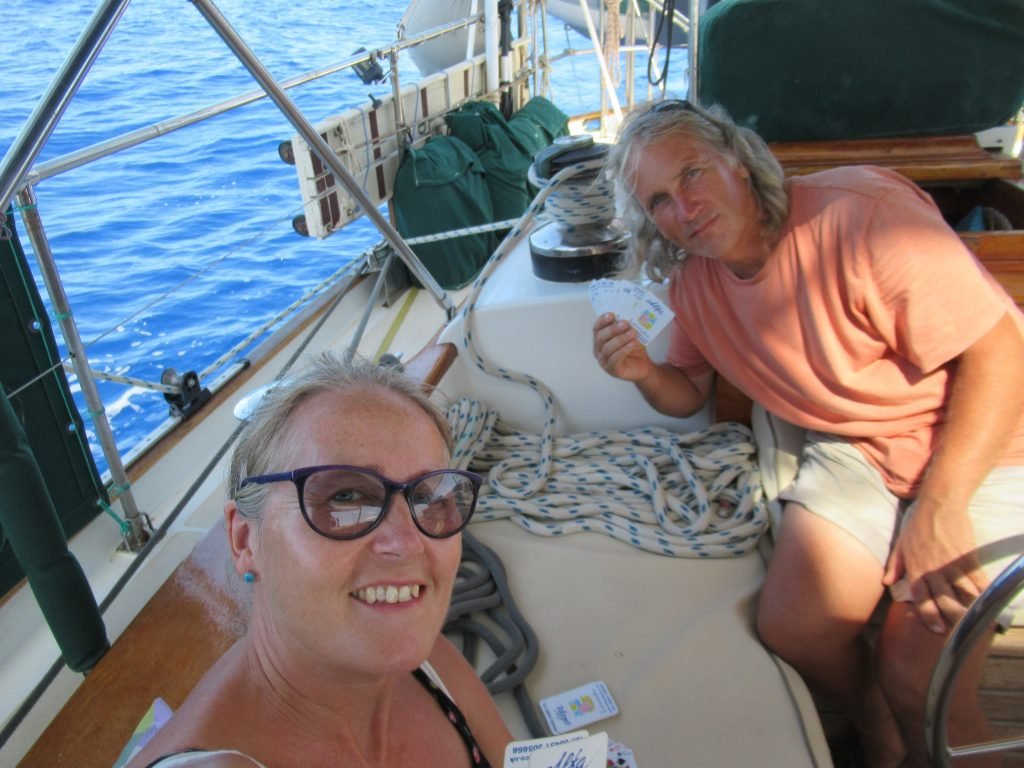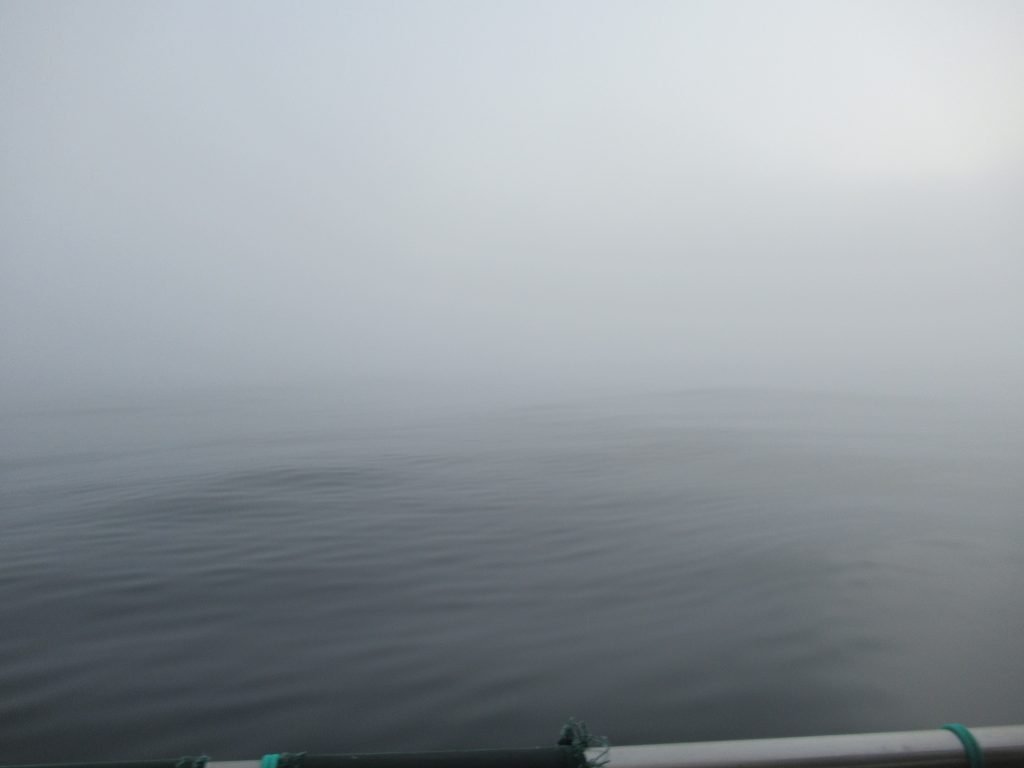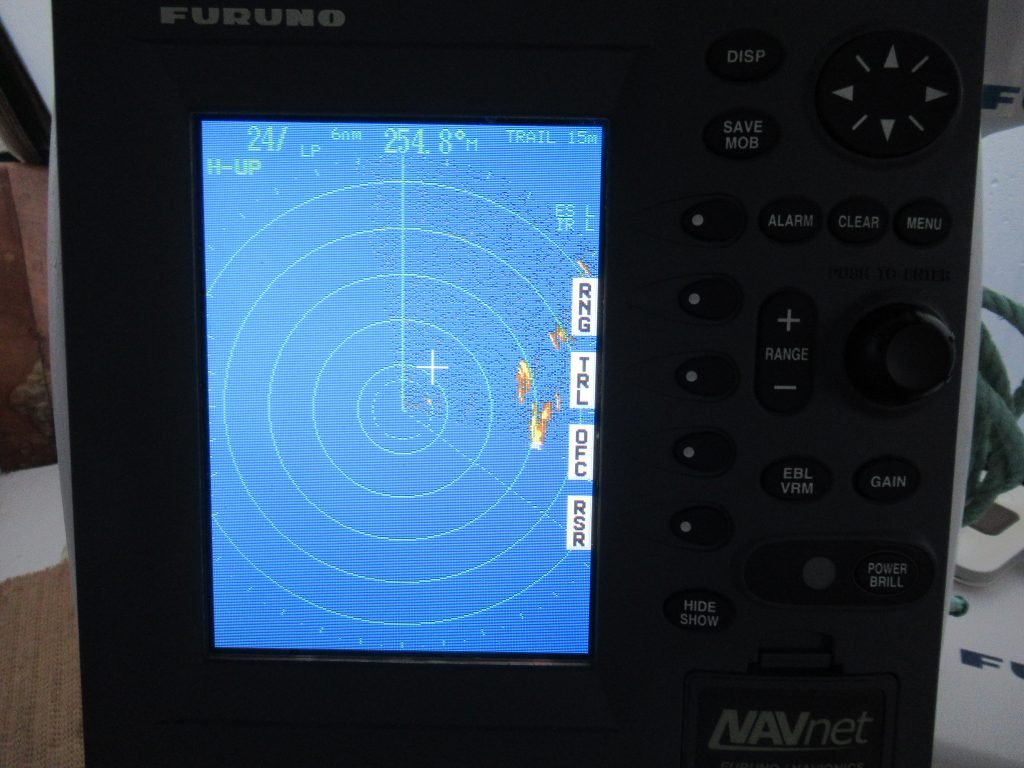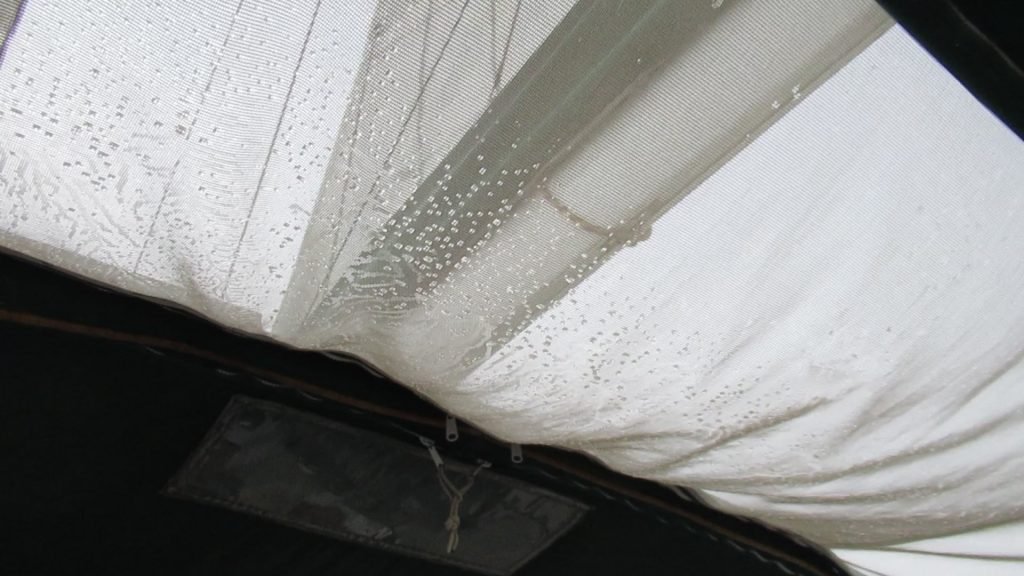On our journey into the Mediterranean in 2014, we met friends that were on their way out. As we shared the adventures we’d had since we’d last met, one of their comments that really stuck in our heads was “leaving the Med is much harder than going in.” How true this turned out to be.
So far we’d been biting off chunks of the 550nm from Menorca to Gibraltar, taking favourable winds when we could. We were now in Formentera, where those winds were being very elusive.

Leaving the Med: How Long Do We Wait?
Perhaps some of you are thinking “why can’t we just wait for good winds?” Unfortunately, it isn’t quite so simple, particularly for longer passages, and in this case, we were trying to cover 550 miles. We’d been watching the winds for this leg of the journey for a few weeks now. So far, nothing anywhere near ideal had materialised.
Another thought might be to complete the journey as a single multi-day trip. However, a minor health issue is affecting our overnight passages. Therefore, breaking the distance into smaller day time distance pieces would be much more comfortable. The downside of this is that it extended the time period required with favourable weather. It also called for having suitable anchorages to wait after each leg. Marinas in high season are not within our small budget so safe anchorages were necessary.
There are other factors that limit how long we wait.
- Autumnal storms -the breakdown in weather around the change of seasons in September. Last year a fierce storm battered eastern Spain and the Balearics and we certainly didn’t want to hang around for a repeat of that.
- Deadlines – although we try to avoid deadlines, we did have an appointment to be in Lisbon by October, before the winter Atlantic storms set in.
- Covid19 – cases were on the rise in Spain. Would there be a second lockdown?
With all these ingredients in the melting pot decision making became complex with no right answers.

Leaving the Med Part 1: Formentera to Mar Menor
The prevailing winds along the southern coast of Spain blow from the east which was in our favour. Yet there had been more west than east over the previous few weeks. A period of east winds had appeared in the long range forecast, briefly west, then back to east. This had the potential to allow us to cross from Formentera to the Spanish mainland and take a short break at Azohia, one of our favourite anchorages of this year. We could then break the leg from Azohia to Cabo Gata into two daylight trips, hang around there whilst the west winds blew through then continue with an overnight to Gibraltar. It seemed so simple!
A Peaceful, Easy Passage
The planned morning of departure for the Spanish mainland was bright and still. No wind. We waited an hour. Still no wind. Another hour passed with no change.
We had to move anchorages anyway, so decided to see if the wind was waiting for us off the south of Formentera. There wasn’t much, just a ruffle on the water, but it was enough to give the main sail a lift and us the impetus to continue on.
The wind filled in a little more and with no swell, we were able to sail. Our course was slightly off, our speed slow, but that could be corrected later.
Overnight we had to motor when the wind faded away. With little swell, Emerald’s gentle motion allowed us a sufficient amount of off-watch rest. We passed the dark on-watch hours hunting for Perseid meteors in our annual “who can spot the most” competition. I think I won.
During the early morning we sailed across the east-west meridian, wondering when we would next see east on the GPS again.
A little more swell built the next day, which gave us concerns about our chosen anchorage which is open to the east. However, on arrival at The Oasis, the swell had reduced, and combined with the protection from a sand reef that lines the anchorage, we had a comfortable night’s rest.
The passage had been relaxed and easy, not quite as fantastic as the one in June (read about our passage to Formentera here), but easy is good. We sailed half the distance and got to try out the downwind rig.


Passing the time with a game of cards 
Crossing the Meridian 
Chasing the setting sun
Mar Menor to El Gorguel
The next day’s forecast was for southerly wind, so if we got around Cabo de Palos early enough, it would give us a beam reach on to Azohia.
Despite some residual tiredness from the overnight passage, we were up early to round the Cabo. Except once around the corner, we found southwest winds, rather than the expected southerlies. We tacked upwind making woeful progress. After an hour we reluctantly gave up and began to motor, however, our SOG was only 4kts. Rather than slog on we pulled into the conveniently located bay of El Gorguel for the night. The wind was blowing straight in, but the offshore fish farm broke up the small waves.
El Gorguel has a long swath of sand and an unusual setting, it’s backdrop the industrial waste of this area’s former mining heritage. The beach was busy with cars, tents and caravans as families enjoyed the sunny weather. At one end we could see what looked like semi-permanent shacks.
As the evening became dusk, beach fires cast an amber glow, and BBQ smells wafted out to us. A mishmash of sound briefly assaulted our ears before each group settled on a suitable volume and by sleep time all was quiet.


El Gorguel to Azohia
The next day the wind was more in our favour and after an hour’s motoring, we were able to turn off the noise and had a great sail on to Azohia.
We’d hoped for a pause of a day or two at Azohia, however, our stay was to be too brief. We squeezed in a walk, a restock, and a meal out to celebrate being back on mainland Spain but the forecasts were shaping up to push us on to Cabo Gata.

Leaving the Med Part 2: The Spanish South Coast
The next leg was trickier. Azohia to Cabo Gata is 90nm, too far for a daylight journey now that the nights were closing in. We could, however, break the distance into smaller chunks with stops at Cala Bardina and Cala de San Pedro. The latter, where a hippy community has set up home, was particularly intriguing. We could wait there or on the east side of Cabo Gata whilst the west winds blew through.
Azohia to Cala Bardina

It all started off well from Azohia, a fast downwind departure after a too brief catch up with friends from Cartagena. Along the way we completed our 17,000th nautical mile in Emerald; it was great to be sailing it. (The trip counter only goes up to 10,000, hence why it only shows 7,000).
The wind faded away as evening approached. We motored in the last 6nm to be in Cala Bardina before dark to allow sufficient light to be able to spot the sand patches amongst weed in the anchorage. Finding a huge patch, we had a peaceful night once the jetskiers had gone home.
Cala Bardina to Cabo Gata

We were up with the sunrise and heading south for an hour with the intention to pick up an east wind. The forecast was for it to be stronger further away from the coast. We would then turn parallel to the land and in theory, have a good sail to Cala de San Pedro.
Forecast and reality were once again not in alignment with wind less than predicted and the swell greater. This put our chosen anchorage in doubt.
The next favourable anchorage was on the west side of Cabo Gata, a further 20nm. With a slight increase in the wind we were managing to sail, but our speed was not good enough to be able to get us there in daylight. Reluctantly, on went the engine.
Being close to the coast we were able to pick up updated weather forecasts for the next few days. It was Monday and winds were due to go west on Friday. The forecast had increased in strength, gusting up to 40kts but shelter was possible on the east side of Cabo Gata. We could have a couple of days in an area I was keen to explore before hunkering down on Friday.
However, the timing of a switch in direction from west to east early Sunday morning gave us concern. The change in wind direction was in our favour to sail on, but the east going 2.5m swells would take longer to settle. There was a high potential for an uncomfortable bash into them if we continued on. And neither side of Cabo Gata would be suitable to wait for the swell to reduce with one side open to that swell, the other to wind.
Decision, Decisions
With the sun setting, we arrived at the west side of Cabo Gata. Katabatic gusts blasted down off the cape, making anchoring hard work, but the anchor gratefully held first go. As we swirled around in the gusts, tired and hugely annoyed with the situation, we reviewed our options. A hot meal helped provide some energy to focus but the choices weren’t great. However much I wanted to stay and explore, I could see the conditions would become unsafe later in the week. The wind forecast for the next two days was light but at least from the east. We could go on to Almerimar Marina, and wait there, but we’ve been there before and it didn’t appeal. Or we could push on to Gibraltar.
That decision reluctantly made, there was one more to make. Should we continue on now and perhaps be able to sail for a few hours, or wait until the morning with it’s forecast for little wind? No wind meant a long motor.
We were tired and we’d been moving every day for the last six days which was not our usual style. I was also very grumpy about being unable to explore ashore. I’ve become a little more accepting of contrary weather and it’s scuppering of my plans, but occasionally this side of sailing life still has the power to really annoy me. The tiredness was exacerbating these emotions; I knew I was not in the best frame of mind to be starting a 160nm passage. So we choose a few hours guaranteed sleep over potentially disturbed passage sleep and to continue on the next morning.

Leaving the Med The Last Leg: Cabo Gata To La Linea
We rose before the sun, feeling a little more refreshed. Pointing Emerald’s bow west, we made good progress motor sailing through the first half of the day.
Our SOG rose and fell between a high of 6kts and a low of 4.5kts. Our research had told us there was a continuous east going current along this stretch of water with small tidal effects on top. We assumed the tide with and against us was causing these speed changes, along with occasional lifts from the light winds.
The day was hot, the engine adding to the sun’s heat and noisy too. Being down below was not a pleasant place to be. But even with the low swell, the motion was gentle so there was something to be grateful for.
By early evening we were slogging west at only 4kts which progressively got worse. Were we dragging something? Looking over the side, we couldn’t see anything that might be hindering our progress. What was going on?
Perhaps they sensed the mood on-board, as the arrival of a pod of 5 dolphins really lifted our spirits. Watching these majestic creatures gliding along Emerald’s hull was a wonderful distraction.
A Damp and Dreary Night

As night fell, so our speed reduced further. We were barely making 3kts through the water. I went off watch at 01:00 expecting an improvement on waking as it would then be more than 6 hours since our SOG fell away so dramatically. That would tie in with the approximately 6-hour cycle of tidal flow.
Alas, there was no improvement. 2.5kts SOG. I can walk faster than that. Was the Med really that desperate to stop us from leaving? My second watch from 04:00 to 07:00 was a wallow in misery. Dampness had settled over the boat and a gentle rain occasionally fell from the mainsail as we rose and fell on the low swell. I huddled under a blanket under the sprayhood, sticking my head out every 10 minutes or so to check for any passing ships. There were none.
The highlight of this watch is that I usually get to see the sunrise, which always lifts my spirits. Yet there was something off about this particular dawn. The darkness imperceptibly turned to lighter darkness, but then faded back to dark again. A few more minutes passed before I realised we were in thick fog, the eerie glow from the bow navigation lights alerting me to this fact. Our SOG was still only 2.5kts, a blessing I suppose if we were going to hit something.
A Foggy Morning
I could no longer hide under my shelter but had to sit where I could keep a very good lookout. It was a long and damp half hour.
Waking Colin from his off-watch, we discussed the situation. We fired up the radar which displayed three targets several miles away. Nothing to worry about. I gratefully went off watch, again hoping for some improvement when I awoke.

Is there anything out there? 
Using the radar to look for other vessels 
Dewey rain off the mast
Seriously, what was going on! Three hours later and the fog had melted away in the sun’s heat yet our speed was still rubbish. There was no way we would be able to get to La Linea before darkness. With internet access again we looked up the Gibraltar Strait tides but could find nothing to account for such poor performance beyond what our previous research had uncovered. We decided to cut in a little towards the coast as sometimes surface currents can be less closer to shore. We didn’t have to go far before we began to see an improvement. Even with the extra distance from cutting in, we were now back on track to just make it past Europa Point before the east going current set in. Our moods lifted just a little.

Hope Reignites
By late afternoon our SOG was back up to 6kts. The rock of Gibraltar appeared through the haze along with the looming bulk of anchored ships that we had to weave a path through. The waters teemed with schools of dolphins out feeding in the fish-rich waters and our mood was quite giddy.

We rounded Europa Point just before 18:00 doing 7kts with the tide. We gave a few whoops of joy and waved bye-bye to the Med. A few more miles took us through the big ship anchorage, earning us a honk along the way from a refueling ship that we were about to cross the path of. In my defense, it’s anchor was still in the water, although perhaps the massive puff of black smoke was a huge clue it was on the move. And then the welcome sight of other yachts at anchor off La Linea. What a relieved feeling it was to get the anchor down that day.
The celebration wine and beer on deck as we admired The Rock tasted extra good that evening. We were perhaps a little over-emotional from tiredness and the lifting of the pressures that the passage had dumped on our shoulders, but after almost a month in the planning, we had made it out of the Med.

Leaving The Med: Summary
I usually try to look for some positive from our sailing experiences; after all, we’re incredibly fortunate to be living this life. In addition, having the ability to be traveling in these difficult Covid19 times is a blessing which many still don’t have. However, I’ve found it difficult to find much pleasure from our slog out of the Med.
It took us 8 days to travel between Formentera and La Linea with a lot of diesel burnt. The majority of the journey felt like hard work with winds that didn’t materialise and swells that did. The last leg was beset with unfavourable forecasts, strong currents against us, and fog. And a large dose of boredom. It really felt like the Mediterranean was making it hard work for us to leave.
On the positive side, nothing broke, and sometimes, boredom is a good trade-off for that.
Sailing Info

19th August: Es Calo, Formentera to The Oasis, Mar Menor – 134nm (75nm sailed)
Anchored in 5.3m in sand, position 37 45.266’N 0 44.133’W
21st August: The Oasis to El Gorguel – 21nm (5nm sailed)
Anchored in 10m in position 37 34.582’N 0 52.572’W
22nd August: El Gorguel to Azohia – 17nm (9nm sailed)
Anchored in 5.5m in position 37 33,345’N 1 10.414’W
23rd August: Azohia to Cala Bardina – 18nm (12nm sailed)
Anchored in a huge sand patch surrounded by weed. 6.5m in position 37 25.727’N 1 30.283’W
24th August: Cala Bardina to Cabo Gata West – 61nm (14nm sailed)
Anchored in 5m in position 36 43.886’N 2 12.302’W
25th August: Cabo Gata to La Linea – 167nm
Anchored in 4.6m in position 36 09.682’N 5 21.76’W
The Social Media Bit: Want to Follow Us?
If you’d like to follow us on other social media platforms (Facebook, Instagram and YouTube), you can do so by using these links:
Or use the link below to track our voyage on NoForeignLand.com.
And finally, you can sign up to receive email notifications of new blogs using the subscribe box at the bottom of this page.
Thank you from Nichola & Colin











